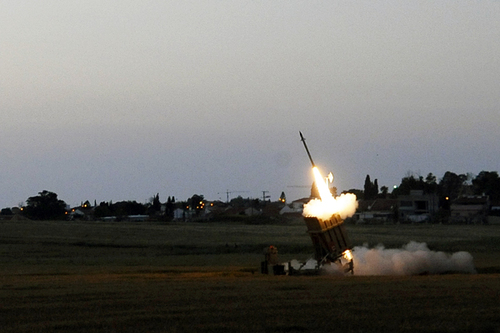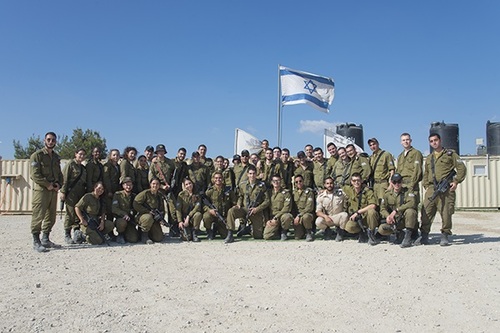-
IRON DOME
Behind the Interceptions Release date 06.05.2019.
Over 600 rockets launched towards Israel, and an 86% interception success rate: over the past days, the IAF's "Iron Dome" combatants have worked around the clock in order to protect Israel. How do the combatants feel, and how do they operate during intense warfare? (By Shira Pansky).
"You know that your combatants are on site, and you can see that they're in danger", said Capt. Dor Azami, a battery commander at the southern "Iron Dome" battalion. "I thought of how behind the IMC (Interception Management Center) screen actual combatants were protecting the launcher, and how that same launcher had to defend the surrounding settlements. At that moment, I knew that I had to bring in an additional interceptor to ensure that no target would hit the area".
Archive Photo
Over the past two days, over 600 rockets have been launched from the Gaza Strip towards Israel. The IAF's "Iron Dome" combatants have successfully intercepted many of these launches. The "Iron Dome" weapon system is not automatic – at any given moment, there are several interceptors in the IMC alongside the IMC Commander and a systems officer. Together, they decide which targets need to be intercepted according to their course and estimated strike location. The combatants divide management of the interception between themselves. At the same time, many combatants are situated near the launcher in order to protect them alongside assisting ground forces.
Preliminary Preparation.
"When the IAF began striking in the Strip, we realized the enemy might respond and began manning the IMC with senior officers", elaborated Capt. Azami. "At around 10AM on Saturday morning, rocket salvos began flying towards Eshkol and the area. According to the IMC's decision, targets due to fall in open areas were not intercepted while other targets – which could have fallen in outposts, bases or settlements – were intercepted. At the same time, we increased our alertness level around the Gaza envelope".
Archive Photo.
"When the situation began escalating, we started scrambling key personnel in order to preserve our operational continuity", continued Capt. Azami. "While scrambling combatants from their homes, we re-divided the missions across the battery's personnel and continued to intercept incoming targets".
"We know that our defense isn't hermetic, and so civilian areas may be damaged during combat", said Capt. Azami. "The people living in the Gaza envelope are used to these scenarios, and they know that they have to run to the bomb shelters for safety. However, it's important to note that we maintained a very high interception rate".
Archive Photo.
With Stars in Their Eyes.
"A while later, I went down to the launchers to see the combatants and make sure that everyone was okay", elaborated Capt. Azami. "The combatants all felt great satisfaction. They are proud, prepared and vigilant. Seeing the interceptions in the sky and knowing that most of them were ours – it filled us all with a feeling of motivation".The "Iron Dome" combatants worked nonstop with very few hours of sleep. "The soldiers don't want to go to sleep after their shift ends, because they understand the importance of their work", concluded Capt. Azami. "The combatants feel a certain satisfaction when they see the interception in the sky, because they know that same target they intercepted was about to fall in a crowded area. I'm very proud of my battery and of the hopeful combatants, who are full of the will to carry on and perform their mission properly".
-
Commentaires



